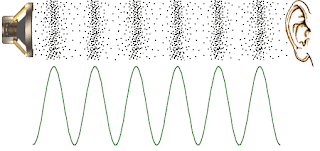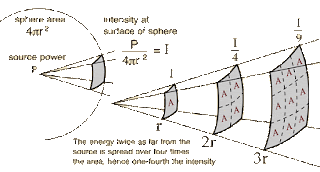Time
Any period motion will be have a frequency, we can say 60 cycles
per second. This means if a one second time period was observed, 60 cycles
would be present. However, it is not always practical to observe one second of
time and count the numbers of cycles.
We can measure the time period for one cycle and calculate the
frequency. We can also calculate the time period for one cycle if the frequency
is known. Time and frequency are the reciprocal of each other. For example, if
60 cycles occur in one second, divide one by 60 to get the time period for one
cycle. When determining the frequency from the time period for one cycle,
divide the time period for one cycle into one.
If 60 cycles occur in one second and the time period for one
cycle is 0,0167 seconds, the calculation can be verified by
f x τ = 1 or 60 x 0,0167 = 1. For note, that the time period for one cycle
of all frequencies above 1 Hz will be less than one second. Also note that if
frequency is in cycles per second, time must be measured in seconds.
Frequency
The number of cycles that occur in one time period, usually one
second we call frequency. Until a few years ago, frequency was identified as
cycles per second (cps). CPS was changed to hertz honoring the man who
developed the frequency theory. Machine speed is measured in revolutions per
minute (RPM), but the frequencies generated by those machines are measured in
hertz.
From the above discussion, the formula for frequency and time
can be derived.
For simple, these formulas can be concluded with a triangle like
picture.
where f equals frequency or number of cycles that can occur in
one second, τ equals the time period for one cycle and 1 equals 1 second in
this case.
Acoustic Waves
Acoustic waves are pressure disturbances that propagate through
a compressible fluid, such as air, and are interpreted by the human ear as
sound. Normally, these pressure disturbances are very small compared with
ambient pressures, but they can be measured using sophisticated microphones.
These waves usually propagate uniformly in all directions, unless the wave
encounters a difference in impedance. Acoustic waves, just like other
mechanical waves, experience reflection, scattering, diffraction, refraction,
and interference.
Sound Intensity
When analyzing enclosures, it will be useful to define the sound
intensity and sound power of a source. The sound intensity, I, at a point is the
time average of the instantaneous rate at which work is done by a sound wave as
it travels. It is defined as
Where P is the sound power, A(r) is the area of a sphere of radius r. For spherical sound power sources the
sound intensity are
Acoustic Impedance
The acoustic impedance plays a large role in the propagation of
sound waves. By choosing materials of appropriate impedance, engineers can
manipulate the sound transmission through a particular path. A wave will tend
to continue uninterrupted in its path so long as the acoustical impedance in
unchanged. By choosing materials with similar impedance characteristics,
engineers can ensure the promotion of wave transmission, such as with ultrasonic
testing. On the other hand, engineers can also suppress sound by
choosing materials with much different impedances. For example, when a wave
traveling through air (which has relatively low impedance) encounters a wall
(which has very high impedance), the wave will reflect back on itself and much
less of the wave will continue on in its previous path. Acoustical impedance is
not merely a property of materials. Impedance also changes with changes in
cross sectional area, bends, junctions, and openings. The acoustic impedance is
defined as the ratio of the complex acoustic pressure to the complex particle
velocity.
Where
p is the sound wave pressure and u velocity of sound wave.

After the data obtained further spool water pump is made in the form of noise contour. Noise contours that have been completed can be seen in the following figure

From this noise contours then we can start designing a method for efficient and effective reduction shall we do to the water pump.
Post will later be followed by a simple experiment everyday materials that can be used to reduce the noise of the water pump.
thanks hopefully useful
Post will later be followed by a simple experiment everyday materials that can be used to reduce the noise of the water pump.
thanks hopefully useful






No comments:
Post a Comment